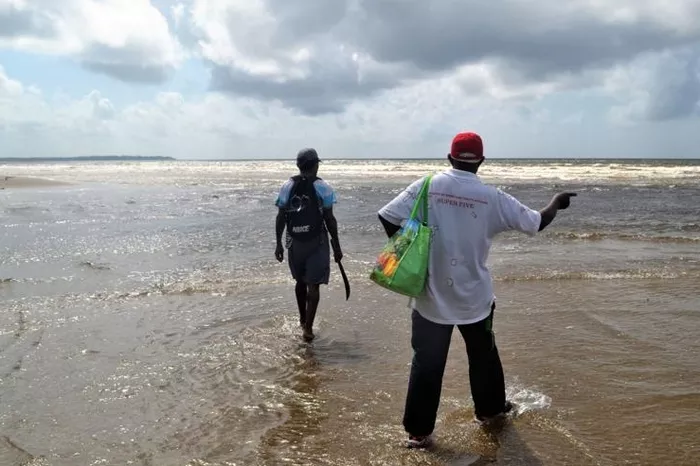Communities near popular hiking spots used for ecotourism have reported numerous accidents over the years. Many of these could have been prevented if visiting guides and hikers had consulted with locals who know the terrain well.
The rainy season is a favorite time for hikers heading to waterfalls. The increased water flow creates stunning views for photographers and videographers. But these scenic opportunities come with serious risks—like falling trees, loose rocks, and even boulders. At the Maracas site, a log that had been perched on the edge of the waterfall was eventually dislodged and shattered upon hitting the bottom, over 91 meters below. The writer recounts witnessing a tourist narrowly escape a falling rock—an event that is not uncommon during this season at that site.
Numerous reports exist of hiking groups trapped by floodwaters that rose too high for safe passage, cutting them off from their return path. These same paths may have been easy to cross earlier in the day. Without a local guide, such groups often don’t know of alternate exit routes and must wait for the waters to recede. On-the-spot attempts to find new crossings have usually ended poorly.
Experienced hikers now understand that trips to gorges and caves should not be finalized until the night before departure. That’s because rainfall upstream might not show its effects until the following day. To stay safe, those planning such excursions should monitor weather conditions through a network of local contacts positioned around the area. Early warnings from people at higher elevations could be life-saving, especially when it comes to navigating narrow gorges or water-filled cave systems.
The writer personally recalls a terrifying moment in the 1980s when visiting a scenic cave. A sudden surge of muddy, roaring water burst from within moments after the group had exited—prompted by a noticeable change in water color and strange rumbling sounds deep inside.
The trails themselves can pose serious challenges. During the rainy season, many become muddy and dangerously slippery, especially downhill. Falls are frequent among hikers who haven’t been taught proper techniques for descending slick paths. Foot placement is crucial. A popular saying among seasoned hikers is, “All spring toes turn heel diggers”—meaning you’ll need to dig your heels into the mud, not skip lightly on your toes.
Some forest trails that cut through swampy areas become fully submerged in the rainy season. When this happens, regular users must wait until the dry season returns. These routes often become impassable and hazardous, forcing hikers to create new trails when the weather improves.
Bois Neuf is one such area where hiking becomes particularly risky. The route requires multiple stream crossings using logs laid between high banks. These crossings are tricky even during dry months when the caiman-filled waters are low. During the rains, the bark becomes slick and water levels rise, increasing the danger.
Yet, experienced and nimble hikers often continue on undeterred.
Along the southern coast, some hikers plan their treks to align with low tides. But during the rainy season, additional caution is needed. Swamp-fed rivers like those from Los Blanquizales pour out into the ocean, and their strong currents can pose serious dangers for anyone attempting to cross. If a high tide happens to roll in at the wrong time, the situation can turn hazardous very quickly.
Despite these dangers, hiking in the rain has its perks. The cooler temperatures reduce fatigue, and the overall experience can feel energizing. So long as hikers don’t rest for too long—keeping a steady pace helps prevent hypothermia—the journey can be both enjoyable and invigorating. A dry change of clothes and a warm drink at the end can make the whole trip feel rewarding.
Stay aware, plan smart, and always respect nature’s power—especially in the rain.
Related Topics
- Balin Miller Completes Historic Solo of Denali’s 9,000-foot Slovak Direct
- Polish Climbing Icon Krystyna Palmowska Dies at 76 After Fatal Fall in High Tatras
- Grampians National Park Reopens 18 Rock Climbing Areas After Collaborative Review

